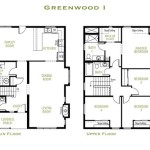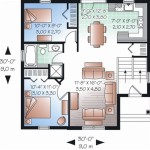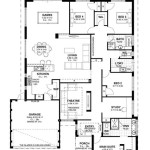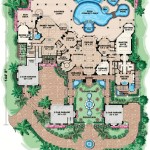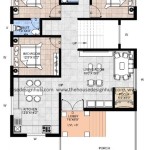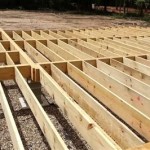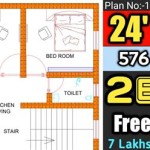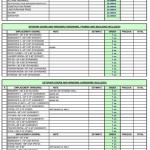House Plans and Build Costs: A Comprehensive Overview
The construction of a new house is a significant undertaking, requiring careful planning and a thorough understanding of the associated costs. Two critical elements in this process are the house plan and the estimated build cost. A well-defined house plan serves as the blueprint for the project, while a realistic budget ensures financial viability and prevents costly overruns. This article provides a comprehensive overview of house plans and build costs, covering key considerations and providing guidance for prospective homeowners navigating this complex process.
Understanding House Plans: Design and Documentation
A house plan is a detailed set of drawings and specifications that outline the design, layout, and construction details of a residential building. It serves as the primary communication tool between the architect, builder, and homeowner, ensuring that everyone is aligned on the project's scope and objectives. A complete house plan typically includes several components, each providing specific information about the building.
Firstly, there are site plans. These plans illustrate the location of the house on the property, including setbacks, easements, and existing site features such as trees, utilities, and topography. They also show the orientation of the house relative to the sun and prevailing winds, which can influence energy efficiency.
Secondly, there are floor plans. These provide a top-down view of each level of the house, indicating the dimensions and layout of rooms, hallways, doors, windows, and other architectural features. They also show the locations of plumbing fixtures, electrical outlets, and HVAC systems.
Thirdly, there are elevation drawings. These present the exterior views of the house from each side, showcasing the architectural style, materials, and overall appearance of the building. Elevation drawings help visualize the finished product and ensure that the design meets aesthetic preferences.
Fourthly, there are section drawings. These are vertical cutaways through the house, revealing the internal structure and construction details. Section drawings are crucial for understanding how the various elements of the house are connected and how they function together.
Fifthly, there are structural plans. These detail the structural components of the house, including the foundation, framing, roof system, and load-bearing walls. They specify the materials and dimensions required to ensure the structural integrity and safety of the building.
Sixthly, there are electrical plans. These show the locations of electrical wiring, outlets, switches, lighting fixtures, and the electrical panel. They also specify the electrical load requirements for each circuit and the size of the wiring needed to handle the load.
Seventhly, there are plumbing plans. These illustrate the layout of the plumbing system, including water supply lines, drain lines, and venting systems. They also specify the locations of plumbing fixtures, such as toilets, sinks, showers, and bathtubs.
Eighthly, there are mechanical plans. These detail the heating, ventilation, and air conditioning (HVAC) system, including the locations of equipment, ductwork, and vents. They also specify the size and capacity of the HVAC system needed to maintain comfortable indoor temperatures.
Engaging a qualified architect or designer is essential for creating a comprehensive and accurate house plan. These professionals possess the expertise to translate your vision into a buildable design that meets building codes, zoning regulations, and your specific needs and preferences. Moreover, they can provide valuable insights into design options, material selection, and construction techniques that can enhance the functionality, aesthetics, and value of your home.
Factors Influencing Build Costs: Materials, Labor, and Location
Determining the build cost of a house is a complex process that involves estimating the expenses associated with labor, materials, permits, and other related factors. These costs can vary significantly depending on the size, design, location, and quality of the materials used in the construction process. While it is impossible to provide an exact cost without a detailed project plan and local market analysis, understanding the key factors that influence build costs is essential for creating a realistic budget.
Material costs represent a significant portion of the overall build cost. The type and quality of materials used for the foundation, framing, roofing, siding, windows, doors, flooring, and finishes can have a substantial impact on the budget. For instance, using high-end finishes, such as marble countertops, hardwood flooring, and custom cabinetry, will increase material costs compared to using more basic materials. Similarly, choosing energy-efficient windows and insulation can increase upfront costs but result in long-term savings on energy bills. Building material costs are also subject to market fluctuations, influenced by supply chain disruptions, tariffs, and global demand.
Labor costs are another major factor in determining the build cost. These costs include the wages paid to the various trades involved in the construction process, such as carpenters, electricians, plumbers, masons, and roofers. Labor rates can vary significantly based on the location, skill level, and experience of the workers. Areas with a high cost of living typically have higher labor rates than areas with a lower cost of living. The complexity of the house design can also affect labor costs, as more intricate designs require more specialized skills and time to execute.
Location plays a crucial role in determining build costs due to variations in land prices, permit fees, and regulatory requirements. Areas with high demand and limited land availability tend to have higher land costs, which can significantly impact the overall project budget. Permit fees and impact fees, which are charged by local governments to cover the costs of infrastructure improvements, can also vary widely depending on the location. Building codes and zoning regulations can also affect build costs, as they may require specific materials, construction methods, or design features that add to the overall expense.
Other factors that can influence build costs include the complexity of the house design, the site conditions, and the level of customization. Complex designs with multiple angles, curves, and custom features typically cost more to build than simpler, more straightforward designs. Difficult site conditions, such as steep slopes, poor soil, or the presence of underground utilities, can also increase build costs due to the need for additional excavation, grading, and foundation work. Customization, such as incorporating unique architectural details, specialized systems, or high-end finishes, can also add to the overall expense.
To accurately estimate build costs, it is advisable to obtain multiple bids from qualified contractors. These bids should include a detailed breakdown of the costs for labor, materials, and other expenses. It is also important to factor in a contingency fund to cover unexpected costs or changes during the construction process. A contingency fund of 5% to 10% of the total build cost is generally recommended. Regularly monitoring the project's progress and comparing actual costs to the budget can help identify potential cost overruns and allow for timely adjustments to keep the project on track.
Cost-Effective Strategies for House Construction
While building a new house can be expensive, there are several cost-effective strategies that homeowners can employ to minimize expenses without sacrificing quality or functionality. These strategies involve careful planning, smart material selection, and efficient construction practices.
One effective strategy is to opt for a simpler house design. Complex designs with multiple angles, curves, and custom features typically cost more to build due to the increased complexity of the framing, roofing, and finishing work. Choosing a simpler, more rectangular design can significantly reduce construction costs without compromising the overall aesthetics of the house. Additionally, minimizing the footprint of the house can also save money on foundation and roofing costs. Prioritizing essential features and eliminating unnecessary extras can further reduce the overall build cost.
Another cost-effective strategy is to select materials wisely. Choosing durable and cost-effective materials can significantly reduce material costs without sacrificing quality or longevity. For example, using engineered wood products instead of solid wood for framing and flooring can save money without compromising structural integrity. Similarly, choosing vinyl siding over brick or stone siding can reduce material costs and installation labor. It is also important to compare prices from multiple suppliers to ensure that you are getting the best possible deals on materials. Consider using recycled or reclaimed materials, which can save money and reduce the environmental impact of the construction process.
Efficient construction practices can also help minimize build costs. Working with an experienced and reputable contractor who has a proven track record of completing projects on time and within budget is crucial. Streamlining the construction process by carefully coordinating the various trades and minimizing delays can also save money on labor costs. Employing energy-efficient construction techniques, such as proper insulation and air sealing, can reduce long-term energy costs and improve the overall comfort of the house. Implementing sustainable building practices, such as using renewable energy sources and conserving water, can also reduce operating costs and enhance the value of the home.
Furthermore, consider phasing the construction project. If budget constraints are a significant concern, breaking the project into smaller phases allows for a more manageable financial commitment. For example, initially focusing on completing the essential living spaces, such as the kitchen, bedrooms, and bathrooms, and deferring the construction of non-essential areas, such as a home theater or exercise room, to a later date. This approach allows homeowners to occupy the house sooner and spread out the construction costs over a longer period. However, careful planning is necessary to ensure that the phased construction does not negatively impact the overall design or functionality of the house.
Finally, explore financing options carefully. Securing the appropriate financing is crucial for ensuring that the project can be completed without financial difficulties. Exploring different mortgage options and comparing interest rates and terms from multiple lenders is essential. Consider obtaining a construction loan, which is specifically designed to finance the construction of a new house. A construction loan typically provides funds in installments as the project progresses, allowing homeowners to manage their cash flow more effectively. It is also important to factor in closing costs, appraisal fees, and other associated expenses when calculating the total cost of financing.

How Much Do House Plans Cost Drummond

Affordable House Plans Our Est To Build Blog Homeplans Com

Est House Plans To Build Simple With Style Blog Eplans Com
What Is The Est Type Of House To Build Blog Floorplans Com

2024 Cost Of Drafting House Plans Blueprints Homeguide

Building On The Affordable House Plans Of 2024 Houseplans Blog Com

Building On The Affordable House Plans Of 2024 Houseplans Blog Com

Top 15 House Plans Plus Their Costs And Pros Cons Of Each Design

To Build Home Plan 4 Ways Save Big The House Designers
Est House Plans To Build Simple With Style Blog Eplans Com

